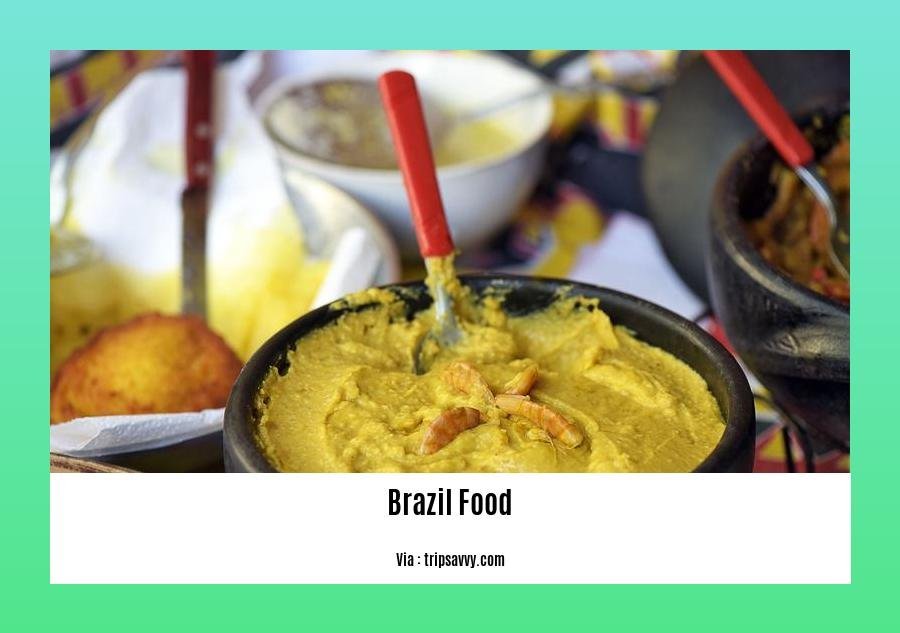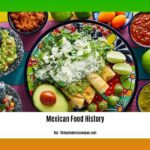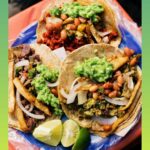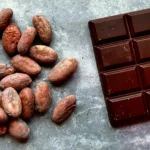Brazilian cuisine is a tantalizing fusion of flavors, influenced by its diverse cultural heritage and rich food traditions. In this article, we will delve into the fascinating world of Brazilian food, exploring typical and popular desserts, cultural facts, and food etiquette in Brazil. Get ready to embark on a mouthwatering journey as we unravel the vibrant culinary culture of Brazil. Get ready to discover the Facts About Brazil Food: Exploring the Flavors of a Vibrant Culinary Culture.
Key Takeaways:
- Fresh Fruits and Vegetables: Brazilians love fresh produce like okra, coconuts, corn, and beans, which are essential in traditional dishes.
- Staple Ingredients: Beans, rice, and manioc flour are commonly used in Brazilian cuisine, providing a comforting and wholesome dining experience.
- Feijoada: This hearty bean stew, made with pork and served with rice, is considered the national dish and enjoyed during festive occasions.
- Pão de Queijo: A popular snack, Pão de Queijo is a delightful cheese bread with a crispy exterior and gooey center.
- Culinary Influences: Brazilian food culture reflects the influences of the indigenous nations, Portuguese settlers, and West Africans, resulting in rich flavors and unique dishes.
- Lunch: Lunch is a significant meal in Brazilian culture, often enjoyed as a social event that brings family and friends together.
- Recommended Sources: For further exploration of Brazilian cuisine, check out “Brazil Facts for Kids” by Kids World Travel Guide and “23 Essential Things to Know About Brazilian Food Culture” by Hey Explorer.
Overall, Brazilian food offers a fusion of flavors and cultural influences that create a captivating culinary adventure for both the palate and the soul. From feijoada to Pão de Queijo, the vibrant flavors of Brazil are not to be missed.
Facts About Brazil Food: Exploring the Flavors of a Vibrant Culinary Culture
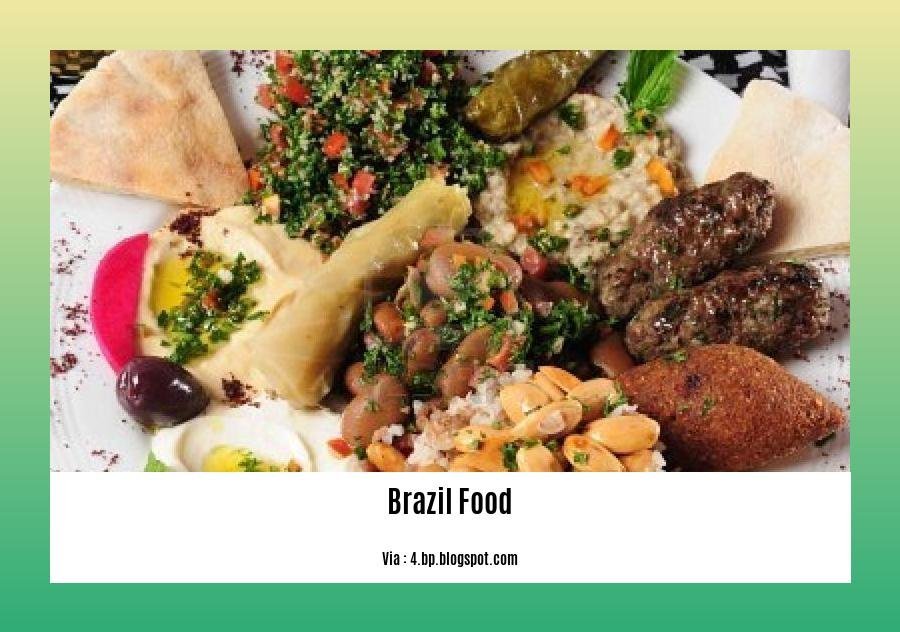
Fresh Fruits and Vegetables: A Burst of Color and Flavor
When it comes to Brazil’s food culture, fresh fruits and vegetables take center stage. Brazilians have a deep appreciation for the abundance of tropical fruits and vegetables such as okra, coconuts, corn, and beans. These vibrant ingredients not only add a burst of color to dishes but also infuse them with irresistible flavors. From refreshing fruit salads to hearty vegetable stews, fresh produce plays a vital role in traditional Brazilian cuisine.
Beans, Rice, and Manioc Flour: The Foundations of Brazilian Cooking
If there are three ingredients that can be considered the backbone of Brazilian cuisine, they are beans, rice, and manioc flour. These staples feature prominently in countless Brazilian dishes and form the foundation for many traditional recipes. Whether it’s the comforting combination of feijoada (a bean stew with pork) and rice or the satisfying crunch of farofa (toasted manioc flour) alongside grilled meats, beans, rice, and manioc flour provide a wholesome and satisfying dining experience.
Feijoada: A Hearty National Treasure
No exploration of Brazilian food would be complete without mentioning feijoada, the beloved national dish. This mouthwatering bean stew, traditionally made with black beans and a medley of pork cuts, is a culinary masterpiece that symbolizes the cultural blending within Brazil. Served with rice and enjoyed during festive occasions, feijoada embodies the warmth and richness of Brazilian cuisine. Its flavors and textures create a symphony of tastes that you won’t want to miss.
Pão de Queijo: A Cheesy Delight
Imagine sinking your teeth into a warm, savory cheese bread with a crispy crust and a gooey, cheesy center. That’s the joy of indulging in Pão de Queijo, a popular Brazilian treat. This delightful snack has become a staple in Brazil, adored by locals and visitors alike. It’s the perfect combination of chewiness and crunch, making it hard to resist. Whether enjoyed as a snack on the go or as part of a leisurely breakfast, Pão de Queijo is a must-try when exploring the flavors of Brazil.
The “Three Races” and Culinary Influences: A Tapestry of Flavors
Brazilian food culture is a tapestry woven from the influences of the “three races” – the indigenous nations, Portuguese settlers, and West Africans. Each of these diverse backgrounds has contributed unique flavors, techniques, and ingredients to Brazilian cuisine. From the use of tropical fruits and vegetables by indigenous communities to the introduction of intricate cooking methods and spices by Portuguese colonizers, and the influence of traditional West African dishes, the culinary landscape of Brazil is a captivating fusion of flavors.
Lunch: The Heartbeat of Brazilian Culture
In Brazil, lunch holds significant cultural importance. It is more than just a meal; it is a cherished time for friends and family to come together and share good food and conversation. Lunchtime in Brazil is often a social event, fostering connection and community. The table is filled with an array of dishes, showcasing the diversity of Brazilian cuisine. From vibrant salads to hearty feasts, lunchtime in Brazil is an opportunity to savor the flavors of the country while strengthening bonds and enjoying the company of loved ones.
To explore more about Brazilian cuisine and discover the wonders of its diverse dishes, you can visit the following sources for additional information:
- “Brazil Facts for Kids” by Kids World Travel Guide: Website
- “23 Essential Things to Know About Brazilian Food Culture” by Hey Explorer: Website
Embarking on a culinary adventure through the flavors of Brazil is an experience that delights the senses and nourishes the soul. From the colorful abundance of fresh fruits and vegetables to the comforting embrace of feijoada and the cheesy goodness of Pão de Queijo, Brazilian cuisine offers a tantalizing journey into a vibrant culinary culture. So, don’t miss the chance to indulge in the incredible flavors that make Brazilian food truly unforgettable.
To discover fascinating facts about brushing teeth, check out our comprehensive guide at facts about brushing teeth.
Cultural Facts on Brazil
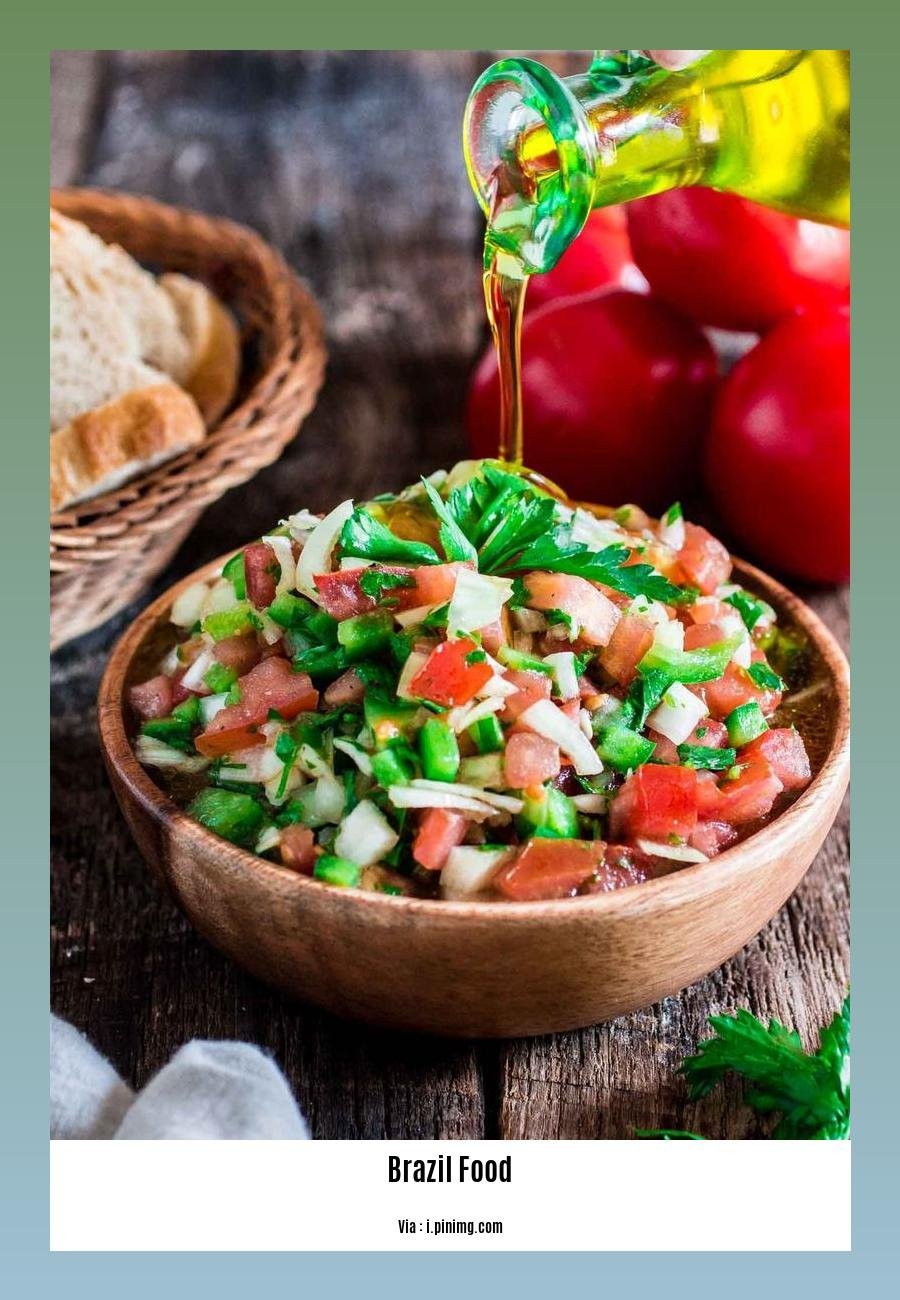
Brazil is a country known for its vibrant culture, breathtaking landscapes, and, of course, its mouthwatering cuisine. From unique ingredients to diverse culinary influences, here are some fascinating cultural facts about Brazilian food that will leave you hungry for more:
1. Brazilian Coffee: A Global Powerhouse
When it comes to coffee production, Brazil reigns supreme. This South American nation is the largest producer of coffee in the world, with its coffee beans renowned for their rich flavor and distinct aroma. If you’re a coffee lover, a visit to Brazil is an absolute must to experience the true essence of this beloved beverage.
Source: Footloose Lemon Juice
2. Guaraná: The Amazonian Energy Booster
Move over, coffee! Guaraná is an indigenous Amazonian fruit that serves up a serious caffeine punch. In fact, it contains more caffeine than coffee beans themselves. Brazilians have been using guaraná for centuries to boost energy levels and stay alert. It’s often consumed in the form of soft drinks, energy drinks, or natural supplements. So, if you’re looking for a natural energy boost, give guaraná a try!
Source: Footloose Lemon Juice
3. Mandioca: The Versatile Staple
Mandioca, also known as yuca or cassava, is a staple food in Brazil. Produced in all 27 states, this root vegetable features prominently in Brazilian cuisine. It can be prepared in various ways, from fried mandioca to the famous pão de queijo (cheese bread) and farofa (toasted cassava flour). Its versatility and widespread use make mandioca an integral part of the Brazilian culinary identity.
Source: Travel Food Atlas
4. Cachaça: Brazil’s National Drink
No exploration of Brazilian cuisine would be complete without mentioning cachaça. This distilled sugarcane spirit, similar to rum, holds the title of Brazil’s national drink. It forms the base of the famous caipirinha cocktail and can be enjoyed straight or in a variety of refreshing mixed drinks. Cheers to discovering the vibrant flavors of Brazil through a sip of cachaça!
Source: Travel Food Atlas
5. A Melting Pot of Influences
Brazilian cuisine is a fusion of flavors from various countries and cultures. The food reflects the diverse historical influences on Brazil, including Portugal, Asia, Africa, and neighboring South American countries. This fusion creates a unique palette of flavors and dishes that are representative of Brazil’s cultural melting pot.
6. Embracing Cassava-Inspired Dishes
Thanks to the prevalence of mandioca, many Brazilian dishes incorporate cassava-inspired ingredients. Farofa, a toasted cassava flour used as a topping or ingredient in various dishes, adds a delightful crunch and flavor. Mandioca frita, or fried cassava, is a popular snack or side dish. And who can resist the irresistible cheesy goodness of pão de queijo? These cassava-based treats offer a true taste of Brazil’s culinary delights.
7. The Brazilian Palate: Mild Heat
Unlike some countries known for their love of spicy food, Brazilians, in general, prefer milder flavors. Their palate is accustomed to less heat, making Brazilian cuisine accessible to a wide range of tastes. So, if you’re not fond of fiery dishes, fear not! Brazilian food will still provide a delightful culinary adventure.
Now that you’re armed with these cultural facts about Brazil’s vibrant food scene, it’s time to embark on a gastronomic journey to this captivating country. Explore the flavors, savor the tastes, and immerse yourself in the diverse culinary landscape that Brazil has to offer.
Key Takeaways:
- Brazil is the largest coffee producer in the world.
- Guaraná, an Amazonian fruit, contains more caffeine than coffee beans.
- Mandioca, also known as cassava, is a staple food produced in all 27 states of Brazil.
- Cachaça is Brazil’s national drink, similar to rum and used in various cocktails.
- Brazilian cuisine is influenced by Portugal, Asia, Africa, and neighboring South American countries.
- Cassava-inspired foods like farofa, mandioca frita, and pão de queijo are popular in Brazil.
- Brazilians, in general, prefer milder flavors and are not accustomed to eating hot food.
Sources:
– Footloose Lemon Juice
– Travel Food Atlas
Food Etiquette in Brazil
Eating is a cultural experience that goes beyond simply satisfying hunger. In Brazil, food etiquette plays a significant role in social interactions and demonstrates respect for the culinary traditions of the country. Let’s explore some fascinating facts about food etiquette in Brazil and learn how to navigate the dining customs with grace and appreciation.
1. Quiet Dining
When dining in Brazil, it is customary to eat quietly and avoid making noise with plates and cutlery. This practice is considered a sign of good manners and shows respect for others enjoying their meals around you. Embrace the relaxed and peaceful ambiance of Brazilian dining by savoring your food without unnecessary clatter.
2. Finish What’s on Your Plate
In Brazil, finishing all the food on your plate is not only expected but also seen as a way to show appreciation for the meal. Leaving food unfinished may indicate that you did not enjoy the dish or left unsatisfied. To express gratitude for the food prepared for you, make sure to devour every last morsel.
3. Avoid Overloading Your Plate
Taking more food than you can eat is considered impolite in Brazilian food culture. It is best to take a reasonable portion that you know you can finish. This shows respect for the host or cook, as it suggests that you value their efforts in preparing the meal. Remember, it’s always better to go for seconds if you’re still hungry.
4. Second Servings are Common
Speaking of seconds, it is perfectly acceptable to have a second serving of food in Brazil. Brazilian cuisine is known for its hearty portions and generous hospitality. If you find yourself craving more of a particular dish, don’t hesitate to ask for seconds. It shows enthusiasm for the food and is often seen as a compliment to the cook.
5. Embrace the Fusion of Flavors
Brazilian cuisine is a delightful blend of Indigenous, Portuguese, and African influences, resulting in a diverse and rich flavor profile. Embrace this fusion of flavors and explore the various traditional dishes. From rice and bean stew to toasted cassava flour (farofa), each bite tells a unique story of Brazil’s cultural heritage.
6. Mild Spices, Except in Bahia
While Brazilian cuisine is known for its vibrant flavors, Brazilians, in general, are not accustomed to eating spicy food. However, in the state of Bahia, you’ll find dishes infused with African and Indigenous spices that pack a punch. If you have a taste for heat, make sure to explore the culinary wonders of Bahia and experience the fiery side of Brazilian cuisine.
Remember, understanding and respecting food etiquette in Brazil allows you to fully immerse yourself in the culinary journey and appreciate the diverse flavors that the country has to offer.
Key Takeaways:
- Brazilians tend to eat quietly to show respect for others around them during meals.
- Finishing all the food on your plate is a way to express appreciation for the meal.
- Avoid overloading your plate and take a reasonable portion that you can finish.
- Second servings are common in Brazilian culture and are seen as compliments to the cook.
- Embrace the fusion of Indigenous, Portuguese, and African influences in Brazilian cuisine.
- Brazilians generally prefer mild flavors, except in the state of Bahia, where spicy food can be found.
Sources:
– Cultural Atlas – Brazilian Culture: Etiquette. ^(source)
– Hey Explorer – Brazilian Food Facts: Favorite Dishes, Eating Habits, and More. ^(source)
FAQ
Q1: What are some typical desserts in Brazilian cuisine?
A1: Brazilian cuisine offers a variety of delightful desserts, including brigadeiros (chocolate truffles), quindim (coconut custard), beijinho (coconut truffles), and bolo de rolo (thin roll cake). These sweet treats showcase the traditional flavors and culinary creativity of Brazil’s dessert culture.
Q2: What are some popular dishes that represent Brazilian food?
A2: Brazilian cuisine is renowned for its diverse and flavorful dishes. Some popular examples include feijoada (hearty bean stew with pork), acarajé (deep-fried dough filled with spicy shrimp), picanha (grilled beef steak), and moqueca (seafood stew). These dishes highlight the unique ingredients and culinary techniques that make Brazilian food so distinctive.
Q3: What are some interesting cultural facts about Brazilian food?
A3: Brazilian food is deeply intertwined with the country’s cultural heritage. Notable cultural facts include the influence of indigenous, Portuguese, and African cultures on Brazilian cuisine, the significance of lunch as a social event in Brazilian culture, and the fusion of flavors from different regions and neighboring countries in South America. These cultural aspects contribute to the vibrant and diverse culinary landscape of Brazil.
Q4: What are some food etiquette practices to be aware of in Brazil?
A4: While Brazilian food etiquette is generally casual, there are a few practices to keep in mind. It is considered impolite to make noise with plates and cutlery, and finishing all the food on one’s plate is expected. Taking more food than one can eat is also considered impolite. Additionally, it is worth noting that Brazilians are not accustomed to eating spicy food, except in the state of Bahia.
Q5: What are some interesting facts about Brazil’s coffee culture?
A5: Brazil is the largest producer of coffee in the world, and its coffee culture is deeply ingrained in the country’s history and daily life. Coffee is typically served strong and black, and it is often enjoyed throughout the day as a social ritual. Brazil’s coffee plantations are known for their wide range of coffee flavors and aromas, offering a truly unique coffee experience for enthusiasts.
- Senior at What Age: Benefits & Eligibility Guide - March 29, 2025
- Unlocking Senior Benefits: How Old is a Senior? Your Complete Guide - March 29, 2025
- Master Russian Politeness:A Guide to Saying Please - March 29, 2025
